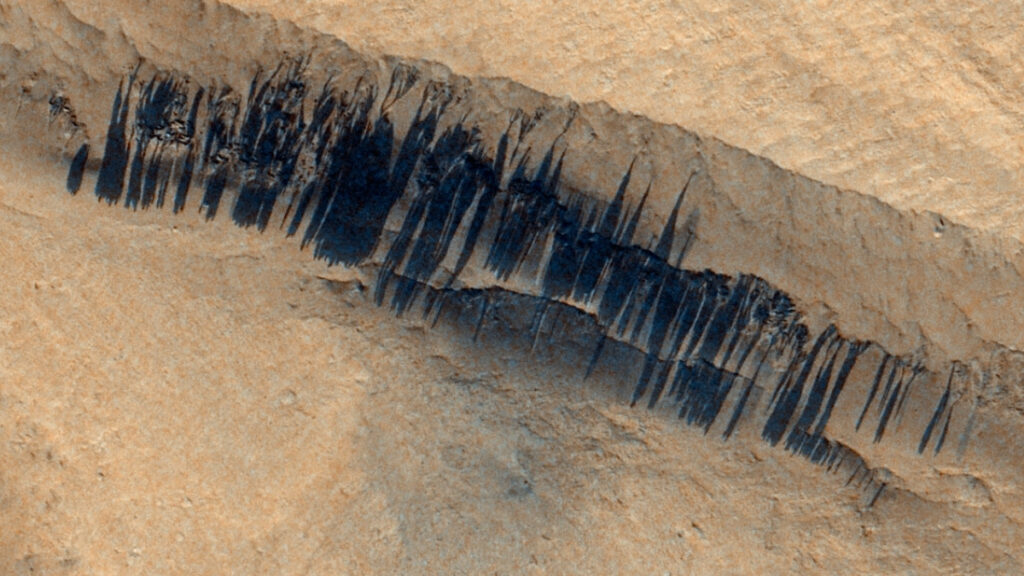
Recurring slope lineae (RSL) on Mars, characterized by their dark, seasonal streaks, have intrigued scientists for years. Recent research has provided new insights into these phenomena, suggesting that they may be influenced by various environmental factors. In particular, the European Space Agency’s (ESA) ExoMars Trace Gas Orbiter (TGO) captured significant images of streaks resulting from a dust avalanche on the slopes of Apollinaris Mons on December 24, 2023.
The TGO employed its Colour and Stereo Surface Imaging System (CaSSIS) to obtain detailed images, revealing a faint clustering of impact craters alongside the dark streaks at the slope’s base. These findings are discussed in a paper titled “Dust, sand and wind drive slope streaks on Mars,” recently published in the journal Nature Communications.
According to the study’s author, Valentin Tertius Bickel, a postdoctoral researcher at the Center for Space and Habitability at the University of Bern, recent geostatistical evidence indicates that RSL may result from “dry,” non-seasonal factors. While the exact mechanisms remain under investigation, Bickel suggests that there is a lack of direct, quantitative data on the rate of dark streak formation and the specific conditions that lead to their occurrence.
To address this gap, Bickel analyzed data from more than two million streaks recorded by the Mars Reconnaissance Orbiter (MRO) between 2006 and 2024. His research focused on streaks likely associated with non-seasonal drivers, such as meteoroid impacts, marsquakes, and wind activity. By employing machine learning algorithms, he developed a “streak census” that identified five distinct hotspots where these features predominantly occur over the observed nineteen-year period.
The research revealed that approximately 0.1% of the annually formed streak population could be linked to significant events, including meteoroid impacts and marsquakes. Bickel stated, “Dust, wind, and sand dynamics appear to be the main seasonal drivers of slope streak formation. Meteoroid impacts and quakes seem to be locally distinct, yet globally relatively insignificant drivers.”
These findings could be pivotal in settling ongoing debates regarding the formation of dark streaks on Mars. They also provide valuable insights into the dynamic forces shaping the planet’s climate, both seasonally and non-seasonally. Colin Wilson, ESA’s project scientist for the TGO, emphasized the importance of these observations, stating, “Obtaining long-term, continuous, and global-scale observations that reveal a dynamic Mars is a key objective of present and future orbiters.”
Understanding the dynamics of Mars’ environment could help answer fundamental questions about the planet’s history, including the timeline of surface water disappearance and the potential for past life. These objectives align with the missions conducted by five space agencies currently exploring Mars, which include plans for additional robotic missions and potential crewed missions before 2050.
As research progresses, the quest to unlock the mysteries of the Martian landscape continues. The recent findings underscore the ongoing commitment to understanding not only how Mars has changed over time, but also the conditions that may have allowed life to exist there.






